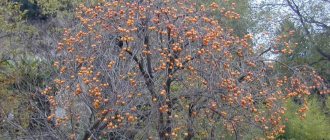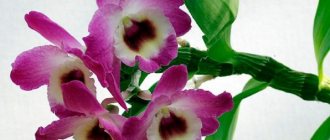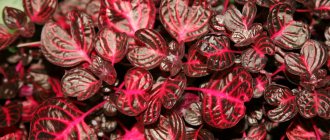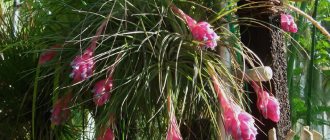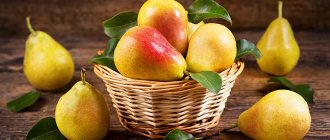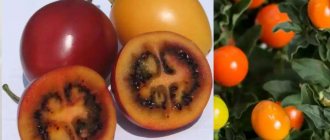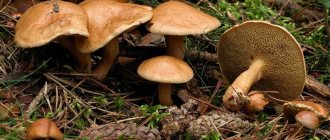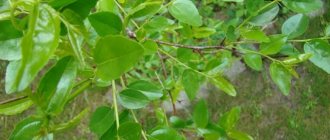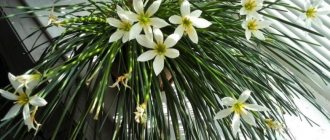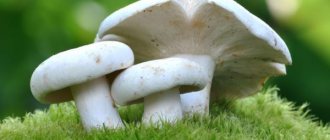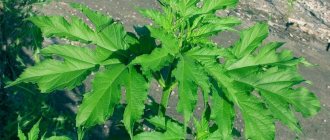What it is
This colorful plant of the malvaceae family has several species, from annual to shrub. Some varieties of this plant are used in light industry for making paper, others serve only as garden decorations. You can prepare an amazing thirst-quenching drink from the sabdariffa variety (Syrian rose). The shrub is grown in Sudan, India, Egypt, Sri Lanka and China. The petals are added to jellies and jams, and jam is made from them. The Egyptians believed that the infusion cured all diseases; one of its names was “the drink of the pharaohs.”
The Sudanese rose has no unusable parts. Both roots, stems, and leaves are used beneficially. But only buds and inflorescences are suitable for brewing. Surprisingly, their life is very short. Blooming in the morning, the flower falls by lunchtime. The inflorescences are collected by hand and dried under special conditions. This is the only way to preserve all the beneficial properties of hibiscus.
If we define what hibiscus is, then it is not tea. A drink with this name should be prepared from the leaves of the tea tree or Camellia sinénsis bush, but the Sudanese rose is a completely different plant.
How to prepare hibiscus
Harvesting hibiscus includes cycles such as industrial cultivation of hibiscus, collection and subsequent drying of inflorescences. Sudanese rose blooms with large, bright red double or semi-double flowers. Beneath them are reddish “cups” - perianths. They are the raw materials for the production of hibiscus.
After the flowers fade, the perianth begins to grow rapidly, rapidly increasing in volume, becoming juicy and fleshy. At this time, they are collected manually using garden shears. If you miss the moment, the seed pod will dry out and open, and the flower will become unsuitable for making hibiscus.
After harvesting, the inflorescences are separated from the seed pods. The process also occurs manually or using special tools. Then the hibiscus perianth is dried in natural conditions - in the fresh air, but not in direct sunlight.
Violation of technology at the drying stage leads to a loss of brightness of the inflorescences: they become either pale or too dark. This also affects the taste characteristics of the drink. Ideally, hibiscus has a purple-red color and a subtle, slightly tart, sour-sweet taste. The drink has a delicate floral and fruity aroma.
So, hibiscus is a flowering plant that has many species, hibiscus is the name of the part of the flower used and the tea made from the Hibiscus sabdariffa plant. In industrial plant growing it is most often called roselle. It can also be called Sudanese rose, red sorrel, rose of Sharon, rosella. Hibiscus from different places of growth differs in taste and color, and has a different ratio of nutrients.
A little history
India is considered the birthplace of rosella (another name for this plant), but the Egyptians call “red tea” or “Kandahar” their national drink. During excavations in the tombs of noble Egyptians, scientists discovered hibiscus petals.
Unlike Arab countries, Europe became acquainted with it only in the 18th century. The unusual sour taste was not liked by gourmets. And only by the middle of the last century did Europeans recognize and appreciate it. Tourists brought it to Russia about half a century ago.
Hibiscus flower, what is it, description of the plant
Hibiscus is also popularly called hibiscus or Sudanese rose. The flower belongs to the Malvaceae family and to the group of herbaceous perennial crops.
The homeland of hibiscus is India, but today this flower can be found in Europe, including the Russian Federation and Ukraine, Mexico and Egypt.
Characteristics and external data:
- In natural conditions, the plant looks like a spreading shrub; its height is approximately three and a half meters.
- The root system is strong and powerful.
- The color of the stems of young plants is green-red, while more mature ones become green-gray. Lignified shoots are covered with bark on top.
- The foliage is oval-shaped, rough to the touch. Young leaves have a pointed tip.
- The inflorescences are small, with a diameter of six to seven centimeters. They grow solitarily and have a short peduncle. The buds are bright red, sometimes purple, crimson, cream and pink are found. The perianths are deep red in color, with a fleshy and dense structure.
After the buds wither, calyxes appear on the flower. At this moment, they are maximally saturated with juice, and therefore they increase significantly in mass. It is during this period that the collection takes place.
Dried cups are used in cooking to prepare a tonic drink. The taste of tea depends on the area where it is grown.
For example, hibiscus grown in Egypt has a cherry flavor with a pleasant sourness, but Mexicans have a salty taste, and the drink itself has a bright orange color.
In addition to cooking, the plant is actively used in medicine.
Petals, seeds and leaves have healing properties. But the roots and stem are used for industrial purposes for dyeing fabric.
What is hibiscus tea made from?
The flowers are collected and dried by hand. In order to prepare an infusion, only red petals and rose cups formed after flowering are suitable.
At the end of the 19th century, two factories were opened in Australia for the production of raw materials from pink inflorescences. The plant began to be cultivated on experimental farms in California and Hawaii. It has become very popular in the Midwest as an ornamental and edible plant. In 1960, its crops were destroyed by a hurricane in most of the southern states. They stopped growing hibiscus on an industrial scale after the cataclysm.
The main suppliers of raw materials are India, Thailand and China. Climatic conditions and countries where hibiscus tea grows affect its taste and color. It is of interest not only to food manufacturers, but also to pharmacists due to its properties.
Possible diseases and their treatment
The plant may be affected:
- Non-infectious chlorosis. Occurs due to a lack of nitrogen, iron, potassium, magnesium. The branches of the plant become thinner, the brightness of the color of the leaves decreases, they turn yellow and fall off, and there is no flowering.
- Infectious chlorosis. The reason is damage by viruses, fungi, bacteria. The leaves turn yellow, the plant weakens and withers.
- Sunburn. Hibiscus is exposed to direct sunlight. White spots appear on the leaves.
It is necessary to treat the plant taking into account the type of disease:
- To avoid non-infectious chlorosis, it is necessary to regularly feed with fertilizers, add iron chelate to the water, or spray the flower with it.
- Treating with fungicides, timely replanting, and avoiding contact with diseased plants will eliminate infectious chlorosis. Periodically, the flower should be washed in the shower.
- Among the pests of hibiscus are: aphids, spider mites, greenhouse whiteflies, scale insects, scale insects and false scale insects, gall midges, for the control of which many drugs have been developed, and folk remedies are also used. These include spraying with soap solution, mustard, and dry red pepper.
Hibiscus responds well to treatment and quickly restores its appearance.
Read more about diseases and pests of hibiscus here.
We advise everyone who is planning to grow or is already growing this wonderful plant to read our articles:
- How and when does hibiscus bloom and how to care for it during flowering?
- Why is hibiscus called the “flower of death” and can it be kept at home?
By properly caring for the plant, you can constantly admire its healthy appearance, large and bright flowers, relax near beautiful bushes and enjoy the taste and aroma of healing hibiscus tea brought from southern countries.
Use in different countries
Indians add flowers to puddings and baked goods. Residents of Angola use the juice of the leaves to heal open wounds. In Nigeria and Ghana they drink it with mint, infused in cold water, in the Caribbean it is served at the Christmas table along with fruit, and in Burma it is considered a natural aphrodisiac.
In Africa, hibiscus is served as a side dish with peanuts, added to sauces and fillings for pies. Red tea is very popular in Scandinavian countries. In Europe, it is used in the food and pharmaceutical industries, and the brewed petals are processed into fertilizers.
Confectioners in Pakistan love it for its ability to give dishes a jelly-like consistency. Therefore, it serves as a base for icings for cakes, dressings and jams.
Calorie content
Sudanese rose flowers contain up to 9.5% protein, 6 essential amino acids. They are rich in flavonoids, which, combined with vitamin C, improve the condition of blood vessels. It can be consumed while following a diet, since the calorie content of 100 ml is 37 calories.
What hibiscus tea is made from affects the rich composition of the drink itself:
- fruit acids and carbohydrates;
- antioxidants;
- thiamine, riboflavin, pantothenic acid and other B vitamins;
- a nicotinic acid;
- vitamin C;
- vitamin K.
Nutritional value per 100 grams
The chemical composition of dried flowers has been carefully studied by scientists. Indicators in grams:
- proteins – 0.4;
- fats – 0.7;
- carbohydrates – 7;
- plant fibers – 12.
In milligrams:
- calcium – 1;
- vitamin C – 18;
- magnesium – 1;
- iron – 9;
- ascorbic acid – 7.
Reproduction
Rosa Minerva - growing floribunda
Before growing Sudanese rose, you need to familiarize yourself with the peculiarities of its propagation. There are two main methods that gardeners use when breeding this flower.
Seeds
The easiest way to grow such flowers is from ordinary seeds. This is the least labor-intensive and simple method that does not require special knowledge and skills from a person. In addition, the seed remains viable for five years. It is necessary to start planting seeds in the second half of February. First, they are planted in pots for germinating seedlings. Then the plant is transplanted into open ground or a larger pot.
Cuttings
Experienced gardeners who have been growing plants for many years use young cuttings to propagate roses. When using this propagation method, the following recommendations must be observed:
- It is necessary to prune cuttings only in the spring.
- For rooting and further planting, it is better to use the upper cuttings.
- Cut stems should be immediately treated with growth stimulants and soaked.
- Planted cuttings should be grown under film for the first 2-3 months.
Rose cuttings
It is important to follow all the listed rules to get a healthy bush.
Useful properties of hibiscus
Anthocyanins give the drink its bright garnet color, and its invigorating taste with sourness is reminiscent of the organic acids in the composition. Quercetin, known as an antioxidant, is responsible for the process that stops the aging of the skin, heart muscle and cornea. Vitamins of group P strengthen the walls of blood vessels, make them elastic, and increase the tone of skin cells. Flavonoids reduce the risk of diabetes diagnosis. Vitamin C and linoleic acid help fight stress and fatigue and improve mental performance.
The complex and rich composition makes the effect on the human body universal and complex, positively affecting all systems.
Medicinal and beneficial qualities
An in-depth study of the composition of hibiscus makes it possible to recommend its use for certain diseases and for the prevention of painful conditions. It will relieve fatigue and restore energy when overworked.
Recommended for use by diabetics and hypertensives. Its amazing feature is that when hot it slightly increases the pressure, and when cold it lowers it. During the cold season, hibiscus will strengthen the immune system. It is very useful for preserving vision. It has a gentle effect on digestion and helps with constipation. The plant’s ability to remove salt from the body, provide a mild choleretic and diuretic effect, and relieve swelling is known.
With systematic use, the complexion will improve, the skin will become firmer and more elastic, peeling and inflammation will decrease. “Royal drink” removes toxins and relieves intoxication syndromes.
For people on a weight loss diet, it will be a good helper and addition to a balanced diet.
It is recommended to drink it in the heat, since with profuse sweating the body loses not only water, but also vital microelements. Rosella restores potassium balance, which is especially important for cardiac function.
Care
In order for a planted Sudanese rose to grow strong and healthy, it must be properly cared for.
Watering
It is necessary to water the flower regularly so that the soil does not constantly dry out. On hot summer days, water the plant at least four times a week. In spring, soil moistening is done less frequently - 2-3 times within 10 days. During the flowering period, watering needs to be increased, as the plant begins to consume more moisture.
Top dressing
In spring, fertilizing is applied to the soil only once - in the second half of April. Nitrogen-containing fertilizers are added to the soil. The next time they fertilize will be in the summer during the flowering period. From June to August, you need to add potassium and phosphorus-containing fertilizers every month.
Manure is the best food for roses
Protection from pests and diseases
Roses grown at home often suffer from diseases and dangerous pests. To prevent the plant from dying prematurely, it is necessary to regularly treat it with fungicidal and insecticidal compounds. These products will protect the planted flowers from pests and prevent the occurrence of many diseases.
Sudanese rose is a beautiful flower, the petals of which are actively used in medicine and cooking. Anyone can grow such a plant at home. Before you do this, you need to familiarize yourself with the features of planting a flower, as well as how to properly care for it.
In cooking
Traditionally, the flower is prepared as a drink. It is drunk hot or cold, with mint, ginger and fruit. Add sugar and lemon. Confectioners use the plant to prepare mousses, puddings and jellies, and chefs use it as a side dish and seasoning for soups. Due to its bright garnet color, the plant is used as a dye, and the dry raw material serves as a flavoring additive in liqueurs. The sauce is similar in appearance and taste to cranberry, so it goes well with meat dishes. Lemonade and mulled wine made from petals are very popular.
How to brew and drink hibiscus correctly - tea recipes
You can drink the drink in any form: hot, warm, cold - it does not lose its healing properties depending on the temperature. It is recommended to brew in ceramic, glass or porcelain containers.
You can also add some components to the red drink to enhance the positive qualities and make it even tastier.
- hibiscus petals - a tablespoon;
- mug of water;
- honey - to taste.
Pour the petals into a container and add water, leaving for two hours.
Then put this dish on the fire and boil.
And then simmer over low heat for about five more minutes.
After this, it remains to strain the drink and add sugar, lemon, honey, mint, ginger, cinnamon or something else - as desired.
As such, there are no rules for brewing hibiscus, so there will be no long recipes with a lot of requirements. It is absolutely “not picky”, and therefore it can be prepared in any way that is convenient for you.
For example, just pour the petals into a small saucepan with water and cook for five minutes - the tea is ready.
In cosmetology
The plant has a positive effect on the color and tone of the skin due to the presence of B vitamins. These substances make the skin elastic, restore water balance and relieve flaking.
Hibiscus extract is included in anti-aging cosmetics, regenerating products and age creams. Its anti-inflammatory effect is used in anti-acne preparations.
The complex of phytocompounds performs an antioxidant function, protects the skin from exposure to ultraviolet radiation, and increases resistance to temperature fluctuations and pollution.
Hibiscus and other phenolcarboxylic acids exhibit pronounced antimicrobial and antiseptic properties.
Who and what is hibiscus cosmetics suitable for:
- those who struggle with skin pigmentation;
- for masks and wraps with detoxification and rejuvenation;
- to relieve swelling;
- owners of dull and lifeless skin with uneven tone;
- to improve skin condition with acne, aging and cellulite.
Shampoos and hair rinses, bath foams, masks and perfume products are made from the Sudanese rose.
Caring for homemade Sudanese rose
The hibiscus sprout loves watering and light, but not direct sunlight, and does not tolerate drafts. When the temperature changes or there is a draft, the capricious plant drops flowers, which, by the way, will appear 5 years after planting. Feels comfortable at a temperature of about +20°C (in winter above +15°, and in summer up to 25°). If there is a lack of moisture, the tips of the leaves dry out, and this can be avoided by spraying with water. If necessary, you can trim the crown of an adult woody bush, covering the wounds with garden varnish. Caring for Sudanese roses also involves feeding the plant, especially during the growth period, with liquid bacterial fertilizers. They should be used according to the directions on the package.
Sudanese rose is susceptible to some diseases (bacterial canker, anthracnose) and suffers from pests (aphids, spider mites). In some cases, spraying and treatment with special preparations or physical destruction of insects helps, but in particularly difficult cases the plant dies.
Hazardous properties
The benefits of the product are greater than the harm. However, rosella, the plant from which hibiscus tea is made, has features that are important to remember when consuming it.
Due to the high content of organic acids, it increases the acidity of gastric juice. It should be used with caution during exacerbation of gastritis and ulcers; it is better to avoid exposure to irritated mucous membranes. Mallow can cause heartburn and relapse of a chronic disease.
Since it has diuretic and choleretic properties, people suffering from urolithiasis and cholelithiasis should not risk drinking natural tea. The product may cause painful movement of the stones.
Like any natural component rich in vitamins and minerals, hibiscus is dangerous for allergy sufferers due to individual intolerance.
Benefits of Sudanese rose, healing properties
Benefits of Sudanese rose, healing properties
In the places where it grows (Sudan, Mexico, Thailand, India, China, Java, Sri Lanka) this plant is considered a medicine. Tea from this valuable plant - hibiscus - is rich in vitamin C, helps against flu and colds. True, if you drink too much of it, you cannot avoid the laxative effect.
Sudanese rose petals, even when dried, contain tartaric, citric and malic acid. This is why the taste of hibiscus is slightly bitter.
As a result of numerous studies and experiments, American scientists began to claim the benefits of such tea for hypertensive patients. The decrease in blood pressure among hypertensive patients consuming Hibiscus tea was 7%.
Scientists around the world continue to debate the benefits and harms of hibiscus tea. But they still tend to believe that in general it is a healthy drink that only improves the health of the human body.
Hibiscus for weight loss
The plant has natural acid and the ability to dissolve harmful and unnecessary fats for the body. Based on this, there is an opinion that it helps fight excess weight.
However, a person is not able to drink such an amount of decoction to lose weight. You won't be able to lose weight with it. Nevertheless, the advice of nutritionists to drink several glasses of sugar-free infusion is not groundless. Its composition improves digestion and optimizes metabolism. A properly brewed and timely drink reduces appetite and reduces the amount of sugar consumed with other liquids.
It is important to remember that it is better not to drink it on an empty stomach. Increased acidity of gastric juice worsens the condition of the mucous membrane. But after eating, a large amount of acid helps digest food.
You cannot lose weight with hibiscus, but you can improve metabolism and digestion.
Sudanese rose (hibiscus): benefits. More about the properties of petals
— Since the petals are rich in antioxidants, hibiscus removes free radicals from the body, thereby being a preventative against all kinds of tumors. — Properly brewed Hibiscus fights heartburn. — Regular tea drinking with hibiscus will relieve constipation and atony in the large intestine. — Hibiscus increases immunity and strengthens the body, as it contains a lot of essential vitamins and microelements. - If cholesterol exceeds the norm, it is very useful to consume it. — For diabetics, this is a drink that helps them fight diabetes! — Applications of hibiscus infusion will help against psoriasis and various eczemas. — Due to its diuretic effect, hibiscus relieves swelling and expels excess fluid from the body. — This tea is useful for vascular diseases, as it strengthens capillaries. — Colds recede when drinking tea from the petals of this wonderful plant. By lowering body temperature, it promotes recovery.
Are there any harmful effects?
If there are no chronic diseases, then consuming hibiscus is completely safe.
Only for some of them it is necessary to limit its use
Let's tell you in more detail. - If you suffer from any allergic reactions, you should drink this tea with caution. — Those with high stomach acidity should not drink hibiscus. — For pregnant women and young mothers, hibiscus can be drunk in small quantities. — Hypotonic people should not start drinking this drink, as it lowers blood pressure. — And this recommendation is for everyone: everything needs moderation, because the most useful product will not be beneficial if consumed in large quantities
Grow Sudanese rose, drink hibiscus and be healthy!
Sudanese rose (hibiscus)
How to cook
Proper brewing is a guarantee of preserving all the healing qualities and taste of the product. The secret of the recipe for this decoction is that despite several methods, there are rules that must be followed.
Firstly, it is important to choose the right cookware. A ceramic, porcelain or glass container is suitable; a metal container can change the color of the broth and add an off-flavor.
Secondly, answering the question of what plant is hibiscus tea made from - only from bright pomegranate flowers. The best brew consists of large inflorescences and calyxes of hibiscus.
According to the traditional version, the proportion is observed: 1 teaspoon of petals per glass of water. The mixture is poured with boiling water and left for 3-5 minutes. Served both cold and hot. Add sugar, lemon, ginger, mint, vanilla, cinnamon and other spices to taste. According to various sources, with this method of brewing, from 50 to 70% of useful substances are lost.
Hot water destroys vitamin C, so rosella is also infused in cold water. The ratio of parts is maintained, recommendations for infusion time are from 5 to 9 hours. In this case, a minimum amount of valuable components is destroyed.
Growing Sudanese roses in open ground
Sudanese rose is perfect for growing in a flower bed. The cuttings are planted in late May or early June. The temperature outside at night should not be less than plus fifteen degrees. Cuttings should be prepared in advance, when scheduled pruning is carried out, it is carried out in mid-July and until the end of August. Pruning is done with pruning shears or a sharp garden knife; be sure to leave up to five internodes, from which leaves will then begin to grow.
Place the cuttings in a root formation stimulator for 60 minutes. If there is no such stimulant, then use aloe juice. A six-centimeter piece is cut from any lower leaf and the cutting is inserted into it for an hour and a half.
The finished cuttings are planted in a disposable cup, into which soil mixed with vermiculite and perlite is first poured. Lightly water and cover with polyethylene.
After thirty days, roots will become visible through the walls of the glass. Now the seedlings are ready to be transplanted into the soil.
With proper care, a bush will quickly grow in the flowerbed, producing many bright buds. The plant is not afraid of the sun, does not require regular watering, but needs periodic feeding. Hibiscus will delight the eye until the first cool weather sets in. In winter, the flower is transplanted into a pot and brought into the house.
Let's watch a video with useful tips on how to grow hibiscus flower:
Hibiscus for pregnant women
It is especially important for the expectant mother that the infusion:
- has a positive effect on the process of hematopoiesis, improving the quality of red blood cells;
- increases immunity, gives strength;
- removes toxins and relieves swelling;
- alleviates toxicosis and is a source of vitamins;
- stimulates mental activity, compensates for the effects of stress.
Pregnancy is not considered a contraindication for using the infusion. However, you must make sure that there are no allergies to the components, observe moderation and consult a doctor.
If you want to experience the benefits of hibiscus for yourself, be careful when purchasing and monitor your own sensations during use.
Reproduction methods
Sudanese rose can be propagated by seed and cuttings. When propagated, the seeds of a plant may not inherit the varietal qualities of the maternal seeds, therefore such propagation is mainly used by breeders. It is much easier for an amateur gardener to propagate a plant using cuttings.
The apical shoots are suitable for cuttings. You can also take the twigs remaining after pruning the bush, but they give roots much more slowly.
Cuttings are cut approximately 8 cm long. The cuts are treated with a growth stimulator. “Kornevin” is perfect for these purposes. Then the cuttings are rooted in water. You can plant the branches directly into the ground. To do this, the cuttings are buried in a nutritious and well-moistened soil mixture, covered with a jar and placed in a bright place. After the first signs of growth appear, the jar is removed. Plantings are regularly moistened. The roots of young plants should appear within a month. In three to four months, the first flowers will bloom on young roses.
